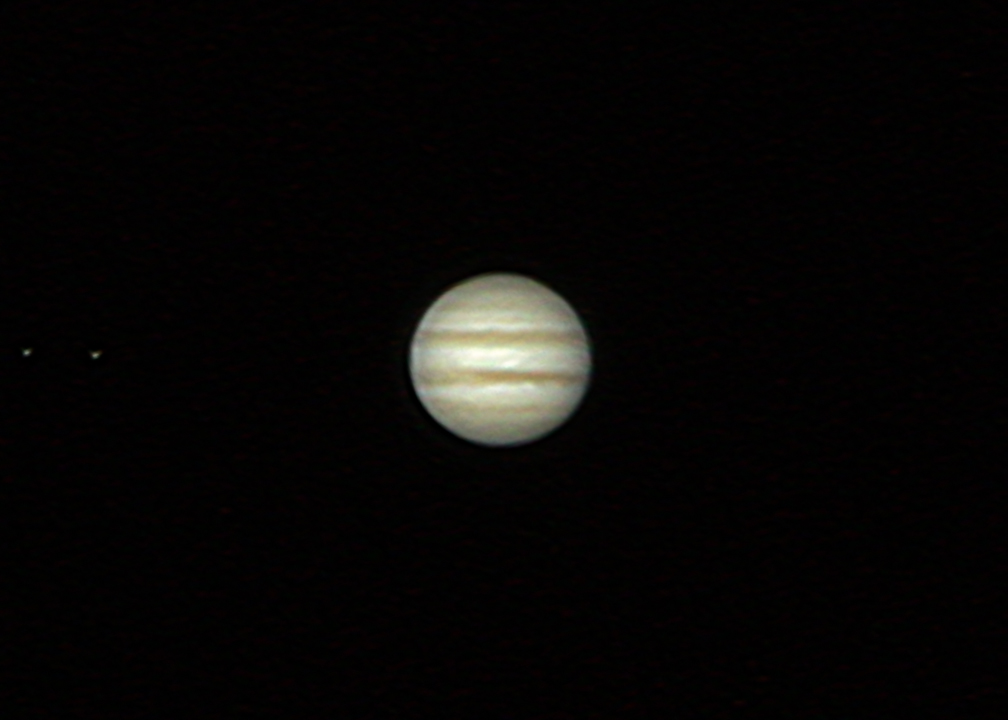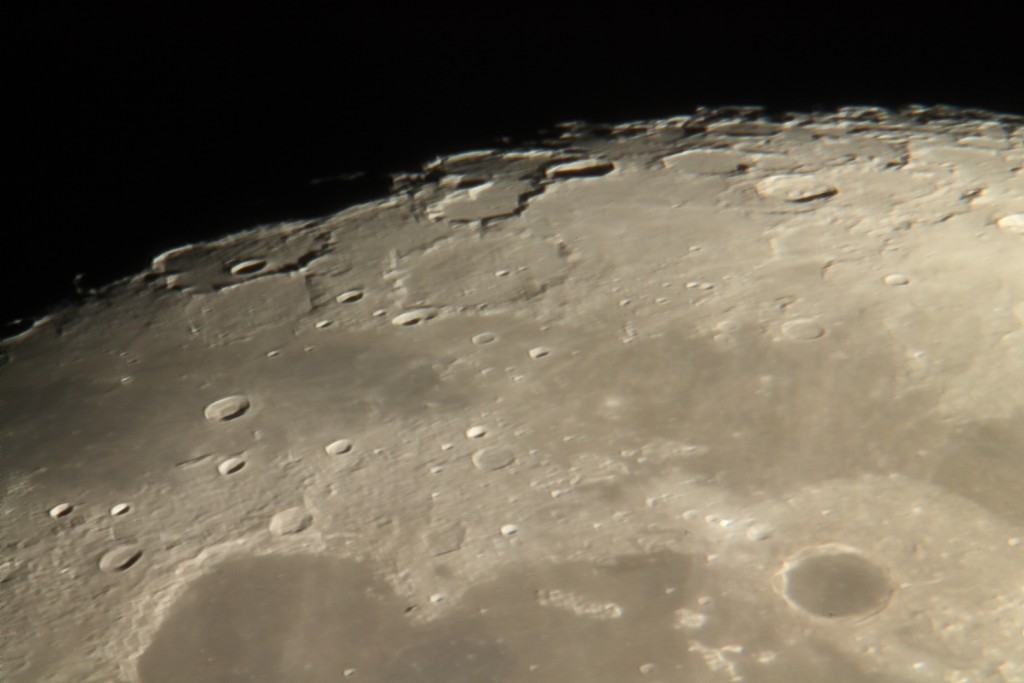2015-04-02
I got a chance to do some imaging in the observatory last night. I imaged two very different objects, the Moon and Jupiter, and used multiple equipment configurations and settings to get the desired result.
The Moon, being very big and bright requires a very different setup than Jupiter since Jupiter is very small, angularly speaking. I needed a wider field of view, a lower ISO, and faster shutter speed for the Moon, and a smaller field of view, higher ISO, and slower shutter speed for Jupiter.
Even though the forecast called for clear skies, and indeed the skies probably looked pretty clear to the layperson, astronomers and meteorologists must have different definitions of ‘clear’ when it comes to the night sky because there were very high, wispy clouds causing a slight haze around any object. To try and counteract this inconvenience, I decided to capture video of these objects and stack them during processing in order to get a more clear image. I think I captured a total of around eight to ten videos – a few of Jupiter and a few of the Moon.
These are two of the best images I could come up with after last night’s session. I’m pretty happy with the one of Jupiter. (I think that’s Io and Europa as well.) It’s definitely the best one I’ve gotten of Jupiter so far. Plus, it gives me hope since last night’s viewing conditions could have been much better. I’m excited to try Saturn next!
Jupiter:
Astro-Tech AT6RC
Canon EOS Rebel T3 (EOS 1100D)
300 frames @ 6400 ISO, 1/50
Stacked w/ RegiStax6
Processed in Lightroom5
Moon:
Astro-Tech AT6RC
Canon EOS Rebel T3 (EOS 1100D)
400 frames @ 3200 ISO, 1/100
Stacked w/ RegiStax6
Processed in Lightroom5



No Comments Comment
No comments yet.
Leave a comment